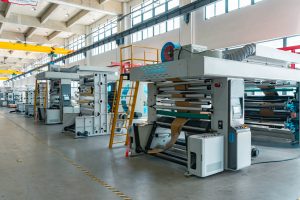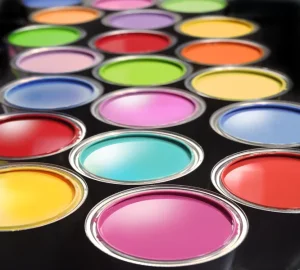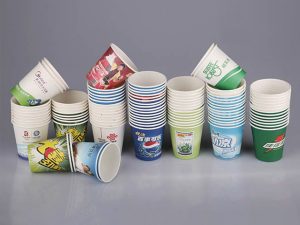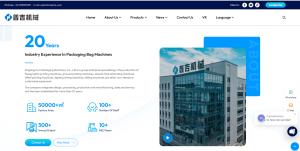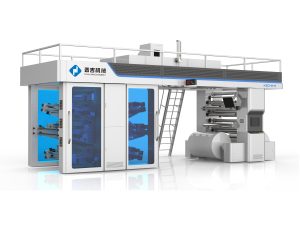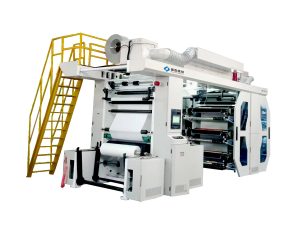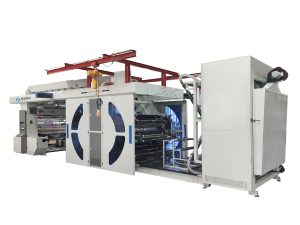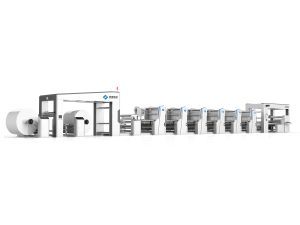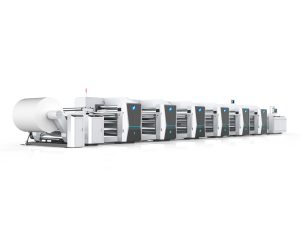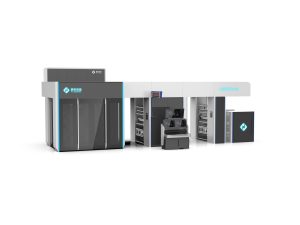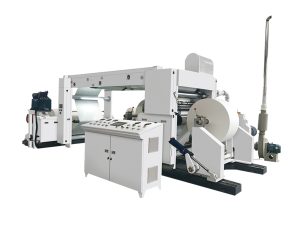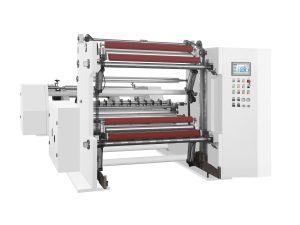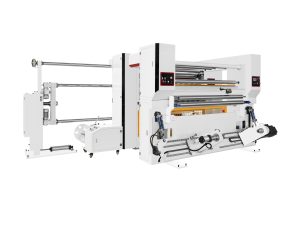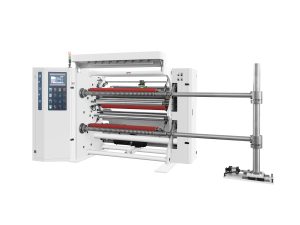In the fast-evolving world of printing and packaging, print finishing machines are essential for transforming plain printed sheets into professional, market-ready products.
Whether you’re using a print press machine, finishing press, or post-press machine, understanding the difference between inline and offline print finishing can help you improve workflow efficiency, product quality, and profitability.
In this guide, we’ll explore what inline finishing machines and offline finishing machines are, their advantages, and the five key differences that define each system.
Table of Contents
ToggleWhat Is Inline Print Finishing?
Definition
Inline print finishing refers to finishing processes that happen as part of the same print production line.
The inline printing system connects directly to the print press machine or print workflow machine, allowing cutting, folding, or coating immediately after printing without manual transfer.
Common Inline Processes
-
Cutting and trimming
-
Folding and creasing
-
Coating and laminating
-
Perforating and slitting
-
UV varnishing or embossing
Advantages of Inline Finishing
-
High-speed finishing machine efficiency: Perfect for large-volume production.
-
Printing automation: Reduces manual handling and operator time.
-
Cost savings: Fewer staff and less downtime.
-
Consistent quality: Real-time alignment and color accuracy throughout the print run.
Inline finishing is particularly beneficial for high-throughput operations that demand consistent performance and quick delivery times.
What Is Offline Print Finishing?
Definition
Offline print finishing takes place after the printing process is completed, using separate offline finishing machines.
Printed materials are moved from the press to a dedicated finishing press or post-press machine for additional processing.
Common Offline Processes
-
Die-cutting and foil stamping
-
Spot UV and textured coatings
-
Perfect binding, gluing, or stitching
-
Special folding or 3D embossing
Advantages of Offline Finishing
-
Flexibility: Accommodates complex and creative finishing effects.
-
Precision: Allows detailed inspection and quality control.
-
Versatility: Compatible with packaging finishing machines and flexo finishing machines.
-
Premium quality: Ideal for luxury packaging, specialty prints, and high-value products.
Offline systems are often preferred for short runs, high-end marketing materials, or packaging that requires a unique tactile appeal.
5 Key Differences Between Inline and Offline Finishing
| Aspect | Inline Finishing Machine | Offline Finishing Machine |
|---|---|---|
| Integration | Built directly into the printing process; part of an inline printing system. | Operates separately as an independent finishing press. |
| Speed | Optimized for high-speed finishing machines and continuous workflows. | Slower, but ideal for detailed and custom finishing. |
| Flexibility | Limited to standard inline options. | Highly flexible; supports creative, complex effects. |
| Cost | Reduces labor and handling costs. | Higher setup costs and additional space required. |
| Quality Control | Ensures consistency during production. | Allows manual inspection and fine-tuned adjustments. |
Integration: Workflow Connection
Inline Finishing
Inline finishing is fully integrated into the print press machine. Once printing begins, finishing processes occur instantly as part of the same print workflow machine. This setup forms a closed, synchronized production line — from substrate input to final output — ensuring minimal handling and continuous productivity.
Offline Finishing
Offline finishing operates independently. Printed materials are transferred to a separate finishing press or post-press machine for processing. This separation introduces more manual steps but allows the operator to intervene, inspect, or modify processes at each stage.
Comparison Insight:
-
Inline finishing ensures streamlined workflow and minimal bottlenecks.
-
Offline finishing allows flexible scheduling and integration with various finishing technologies.
If your business prioritizes automation and speed, inline integration is advantageous. If adaptability and control are more important, offline is the better choice.
Speed: Production Efficiency
Inline Finishing
Inline systems are built for high-speed finishing machines, operating in sync with the inline printing system. Because there’s no need to move materials between machines, the entire process runs continuously, which can cut production time by 30–50% depending on the job type.
This makes inline systems ideal for:
-
High-volume label production
-
Continuous roll-to-roll operations
-
Large-run digital printing environments
Offline Finishing
Offline systems, though slower, allow more deliberate setup and finishing accuracy. Operators can optimize speed based on specific substrates, coatings, or embossing requirements.
This approach is preferred when the job involves multiple effects or materials that require distinct processing speeds.
Comparison Insight:
-
Inline finishing maximizes production throughput.
-
Offline finishing maximizes process precision and creative flexibility.
For example, if you’re running a million-label job, inline is ideal; if you’re finishing luxury perfume boxes with foil and embossing, offline is essential.
Flexibility: Finishing Options and Creativity
Inline Finishing
Inline setups are highly efficient but somewhat limited in customization. They’re designed for standardized tasks like trimming, folding, or coating that match the print speed. Complex finishes such as metallic foils, multi-layer coatings, or structural embossing are rarely possible inline due to mechanical and timing constraints.
Offline Finishing
Offline finishing provides unmatched flexibility. You can use specialized equipment such as flexo finishing machines, packaging finishing machines, or post-press machines to apply multiple effects sequentially. You can even reprint, overcoat, or apply variable data enhancements between steps.
Comparison Insight:
-
Inline = standard, automated finishing.
-
Offline = custom, creative, and high-value finishing.
For packaging printers and luxury brands, the ability to experiment with textures, layers, and metallics often makes offline finishing the superior choice.
Cost: Investment vs. Operation
Inline Finishing
Inline systems lower ongoing costs by reducing manual labor, setup time, and material handling. They also minimize errors associated with reloading or misalignment. However, the initial investment can be substantial because you’re integrating advanced finishing modules into the print press machine itself.
Offline Finishing
Offline setups typically require separate machines and additional operators. While this may increase short-term labor costs and space requirements, it provides the flexibility to use one finishing unit for multiple presses — spreading the investment across different jobs and workflows.
Comparison Insight:
-
Inline finishing = higher initial investment, lower operating cost.
-
Offline finishing = lower entry cost, higher operational flexibility.
In short, inline systems are cost-effective for long-term high-volume production, while offline finishing suits multi-job or custom-service providers.
Quality Control: Consistency vs. Precision
Inline Finishing
Inline systems maintain consistent quality throughout production because printing and finishing happen simultaneously. Sensors, automation modules, and AI-based printing automation tools monitor registration, alignment, and color consistency in real time.
However, inline systems offer limited opportunities for manual inspection before finishing — meaning any print defects may carry through to the final product.
Offline Finishing
Offline finishing allows manual review of every batch before applying finishes. Operators can adjust settings, fix color or coating issues, and experiment with alternative techniques without halting the main press.
This approach ensures maximum precision, particularly for premium packaging, art books, and specialty marketing materials.
Comparison Insight:
-
Inline = automated consistency and speed.
-
Offline = detailed inspection and rework flexibility.
If your business values tight deadlines and uniform quality, inline wins. If you prioritize craftsmanship and premium detail, offline remains unbeatable.
How to Choose the Right Finishing Method
When deciding between inline and offline print finishing machines, consider these key factors:
Production Volume
If your goal is to handle high-volume jobs efficiently, an inline finishing machine will streamline production.
For small runs or custom work, offline finishing machines provide greater creative control.
Type of Finish Required
Inline systems excel at standard coatings, folding, and laminating.
However, if your project requires textured varnishes, foil stamping, or unique packaging effects, a packaging finishing machine or flexo finishing machine in an offline setup is a better choice.

Budget and Equipment Availability
An inline system requires an upfront investment but can save money in the long run by reducing labor.
Offline systems may need multiple post-press machines, but they expand your finishing options and can serve diverse client needs.
Turnaround Time and Delivery
If your business prioritizes speed and high consistency, inline finishing is ideal.
If quality, creativity, and premium effects are your focus, offline finishing will deliver the desired results.
FAQs
Does inline print finishing improve overall print quality?
Yes. Inline finishing machines ensure consistent alignment and coating during production, reducing human error and improving overall print uniformity — especially in automated workflows.
Is offline finishing better for packaging and labels?
Absolutely. Offline finishing machines and packaging finishing machines can handle thicker substrates, apply textures, and create high-end visual effects ideal for premium packaging and label production.
Can inline finishing handle specialty coatings or foil effects?
Usually not. Inline systems focus on speed and standard coatings. For metallic foils, embossed textures, or 3D varnishes, offline finishing or flexo finishing machines are more suitable.
What type of business benefits most from inline finishing?
Commercial printers or packaging companies with high-speed finishing machines and continuous production needs benefit most from inline finishing due to reduced handling and faster turnaround times.
How does automation affect inline and offline finishing efficiency?
Printing automation enhances inline finishing efficiency by synchronizing print and finishing steps.
In offline setups, automation supports job tracking, material feeding, and inspection, boosting precision and reducing waste.
Conclusion
Both inline and offline print finishing machines are critical components of modern printing automation.
-
Inline finishing provides speed, efficiency, and consistency, making it ideal for continuous, large-scale production.
-
Offline finishing offers flexibility, creativity, and precision, perfect for custom or high-end print projects.
Your choice should align with your print workflow machine configuration, production scale, and quality expectations. By investing in the right finishing press system, you’ll not only enhance production efficiency but also deliver top-quality finished products that stand out in the market. Contact Us for more information.


